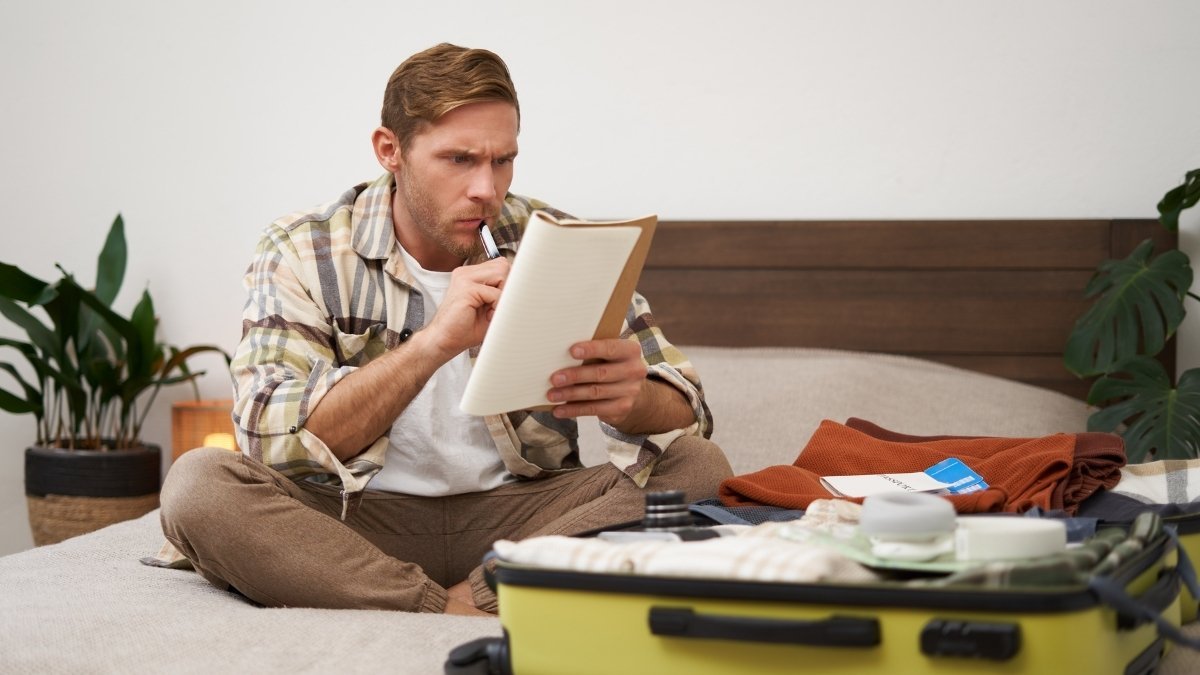Your brain feels like a browser with too many tabs open, and another night of restless, broken sleep isn’t going to fix it. For a growing number of exhausted Americans, the answer isn’t a new mattress—it’s a $1,700-a-night hotel room where the only goal is to finally get some rest.
This new travel trend isn’t about fancy dinners or infinity pools. It’s about AI-powered beds, sleep cocoons, and biometric trackers designed to solve a problem that has become an epidemic.
Sleep, a basic human need, is now the ultimate luxury good. But why are we so tired that we’re willing to pay a fortune for something that should be free? The answer reveals a startling truth about the world we’re all trying to escape.
Checking In to a $1,700 Nightcap
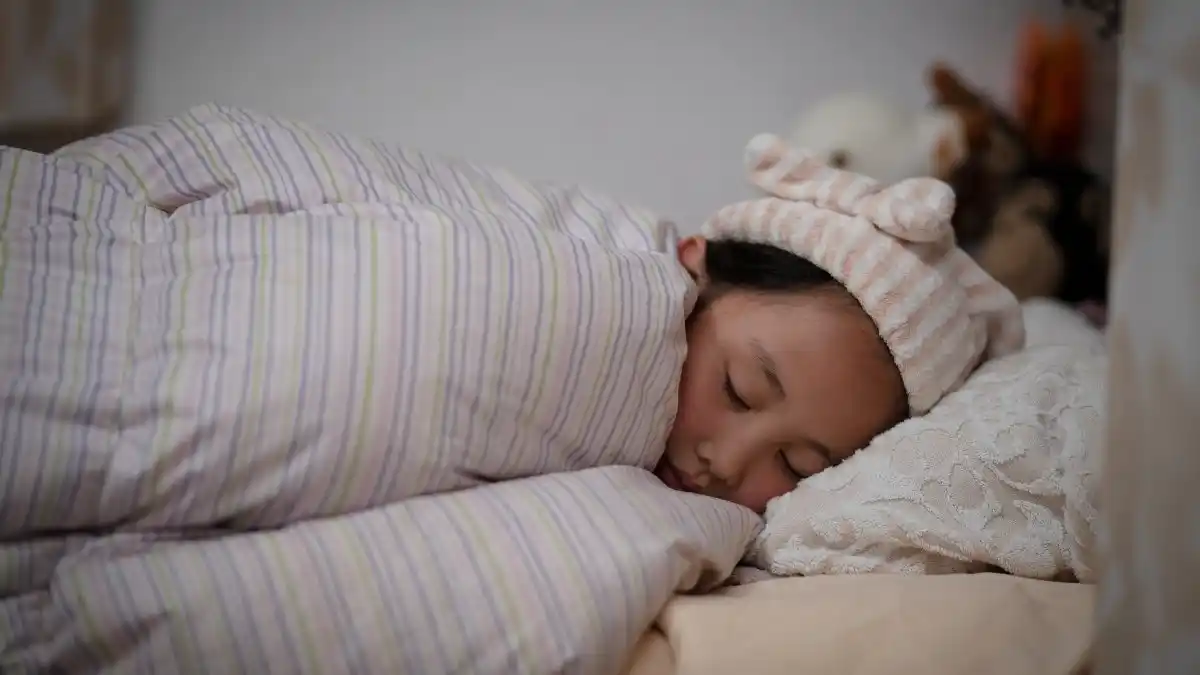
The hotel lobby is quiet and smells like eucalyptus. It feels calm. After a busy week and a long flight, this is different. At the Waldorf Astoria Los Cabos Pedregal, there is no busy front desk. Instead, a quiet scent ritual helps you “slow down immediately”.
The building itself is designed to be soothing, using natural materials and open spaces. This is called biophilic design, and it can lower stress by up to 16%.
This is the new world of luxury travel: sleep tourism. Here, the main goal isn’t a fancy meal or a nice pool. It’s the promise of a perfect night of sleep.
For an average of $1,725 a night, people are visiting these places to escape a world that has left them tired. At hotels like Sensei Lānaʻi in Hawaii, you get a WHOOP 4.0 sleep tracker in the mail before you even arrive.
At Lanserhof Tegernsee, a high-tech “sleep cocoon” controls the light, sound, and temperature in your room. A five-day trip to the Alps can cost over $13,000.
What do these high prices get you? And what does it say about the world we live in? Sleep is a basic human need, but it has become a luxury item. The reason for this isn’t just about fancy sheets or smart beds. It’s about a society that is always running on empty.
Why So Many Americans Can’t Sleep
The growth of sleep tourism is a reaction to a major public health problem. The Centers for Disease Control and Prevention (CDC) calls lack of sleep a “public health epidemic”. The numbers show a country that has forgotten how to rest.
One in three American adults does not get the seven or more hours of sleep they need each night. Between 50 and 70 million adults in the U.S. have a sleep disorder like insomnia.
Not getting enough sleep is more than just feeling tired. It harms your health. It is linked to a greater risk of long-term health problems, including heart disease, obesity, type 2 diabetes, and depression.
The cost to the economy is also huge. Lack of sleep costs the U.S. more than $411 billion each year from lost work, higher healthcare costs, and car accidents caused by tired drivers.
This problem is a result of a work culture that never stops. Workplace stress costs the U.S. economy another $300 billion a year.
In 2024, almost half (49%) of American workers said they feel stress from their job every day. A full 76% of employees say this stress hurts their sleep. The issue is worse for younger people, with 59% of workers under 35 feeling daily work stress.
With over 80% of the workforce at risk for burnout in 2025, the link is clear: our jobs are making it harder for us to rest.
The COVID-19 pandemic made things worse. The crisis led to more anxiety and broken routines, which caused sleep problems to increase. It also made people think more about their health.
Dr. Rebecca Robbins, a sleep scientist who works with Hilton, says the pandemic caused “a shift to the importance of sleep”. After the pandemic, travelers want more than just a distraction. They are looking for “true renewal”.
This change in what people want created a big market for sleep tourism. Hotels saw this new demand for rest and quickly started to offer it.
The Architecture of Rest
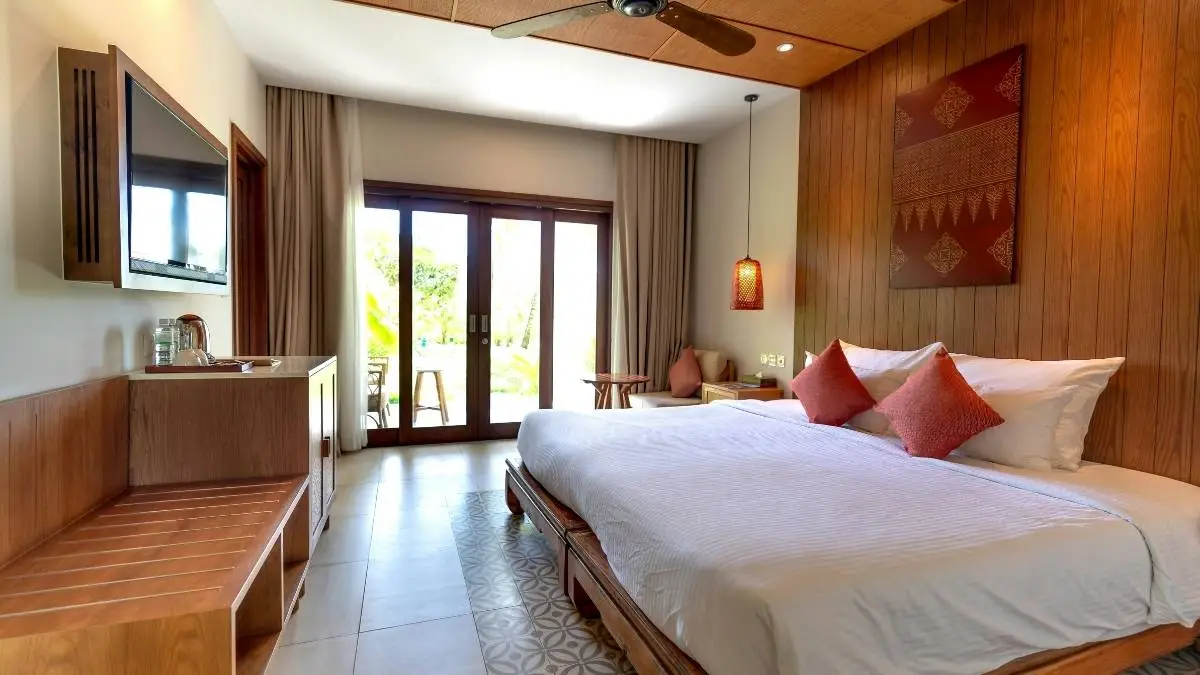
How Hotels Sell You a Good Night’s Sleep
Sleep tourism is a fast-growing part of the wellness travel market, an industry expected to be worth almost $1.4 trillion by 2029.
The idea is simple: you travel to a place with the main goal of improving your sleep. North America is the biggest market for this, because so many people are tired from the health crisis.
What you get can be simple or very advanced. Some hotels offer basic rooms with no TVs, good bedding, blackout curtains, and white noise machines. Hotels have been offering these things since the 1960s.
But at the high end, you can find programs that last for days. They mix medical science, wellness, and new technology into one expensive experience.
Big hotel brands are spending a lot in this area. Hilton has started “Sleep Retreats” at its luxury hotels with Dr. Rebecca Robbins. Dino Michael, who leads Hilton’s luxury brands, says getting a great night’s sleep is the “biggest priority for a hotel guest”.
Rosewood Hotels has “Alchemy of Sleep” retreats, and Six Senses has a “Sleep with Six Senses” program created with sleep expert Dr. Michael Breus.
These programs do more than just give you a good bed. They try to find and treat sleep problems and teach you how to sleep better long-term.
| Program/Location | Price (Est. per night/program) | Core Scientific Offerings | Core Wellness/Luxury Offerings |
| Sensei Lānaʻi, A Four Seasons Resort (Rest & Reset Program) | ~$2,000+ per night | Biometric tracking via complimentary WHOOP 4.0 band sent pre-arrival; data analysis with on-site guides; health assessments and personalized sleep strategies. | One-on-one sessions with experts; thermal body mapping; Japanese soaking pools; Thai aqua therapy; lakeside yoga; infrared saunas. |
| Six Senses Properties (Sleep with Six Senses Program) | ~$950 per night (based on 3-night retreat) | In-depth sleep consultation and tracking analysis with a “Sleep Doctor”; personalized wellness plan targeting sleep disorders; collaboration with Dr. Michael Breus. | Personalized spa and fitness treatments; sleep-inducing snacks and nutritional advice; yoga nidra; meditation; sound bathing. |
| Equinox Hotel New York | ~$1,000+ per night | Partnership with sleep scientist Dr. Matthew Walker; room design engineered for sleep (total soundproofing, blackout system); AM + PM Rituals Programs with circadian-optimizing breathwork. | In-room dining with melatonin-boosting options; access to Equinox fitness club; spa treatments like the “herbal sleep cocoon”. |
| Park Hyatt New York (Bryte Sleep Suite) | ~$1,780+ per night | AI-powered Bryte Restorative Bed that adjusts in real-time to sleep stages, body pressure points, and temperature; provides sleep insights on duration and depth. | Aromatherapy diffusers; sleep masks; curated sleep-related reading materials; access to meditation and soundscape apps. |
3 Ways Hotels Design Rooms for Better Sleep
The high prices for these trips are explained by science. Hotels promise an environment that is carefully designed to help you rest. This “architecture of rest” is based on a new idea of luxury.
As performance coach Phil Learney says, “Luxury is now defined by subtraction. Remove noise, blue-light toxicity, temperature volatility, and light leakage, and performance returns”. The main idea is to scientifically remove modern-day stress.
1. Biophilic Design:
This just means bringing nature inside. Hotels use plants, water, natural light, and materials like wood and stone to connect you with the outdoors. Studies show that being around nature can lower stress by 16%, which helps create a calm feeling.
At Naviva, A Four Seasons Resort, 15 luxury tents are designed to blend in with the jungle. They have open-air living rooms and canvas walls you can roll up to let the outside in.
2. Circadian Lighting:
To fight the bad effects of blue light from screens, these hotels use special lighting systems. These systems support your body’s natural 24-hour clock by copying the cycle of sunlight.
The lights change from warm in the morning to brighter during the day to help you feel awake. Then, they shift back to a warm, amber light in the evening to help your body make melatonin, the hormone that makes you sleepy. This helps reset your internal clock.
3. Sleep Technology & “Biohacking”:
The most advanced part is the use of “biohacking” tech to improve your body’s functions. This includes AI-powered beds, like the Bryte bed, that use sensors to detect your sleep stages.
The bed then automatically changes its firmness and temperature during the night to help you sleep better. Some places also offer treatments like cryotherapy (short periods of extreme cold) and red light therapy.
The idea is that cryotherapy can help lower your body temperature for deeper sleep, and red light at night can help your body make melatonin naturally. This technology is all about control—designing not just the room, but your body, for the best possible rest.
The Price of Peace
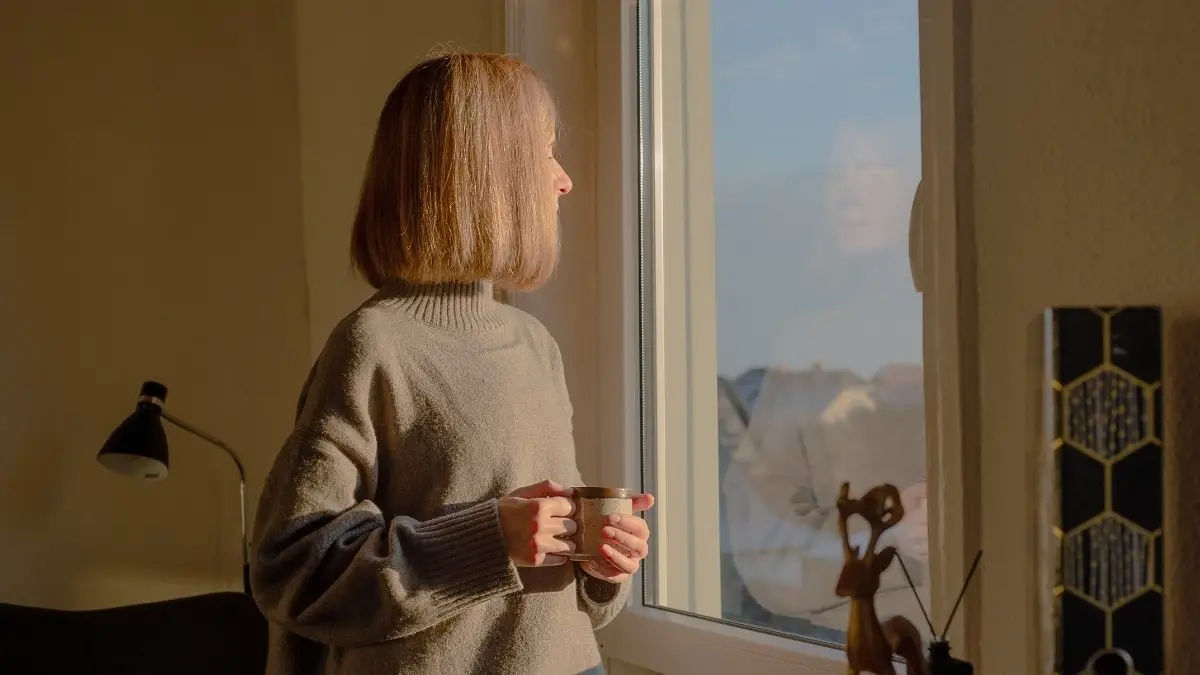
Do These Expensive Trips Actually Work?
Even with all the science, it’s not clear if these expensive trips have long-term benefits. One big problem people report is “performance anxiety.”
A journalist who stayed at the Grand Velas Riviera Nayarit said the pressure to sleep well after paying so much money actually kept her awake.
A sleep psychologist says that for many, “the pressure to sleep well when you’re paying for this luxury might in fact be the thing that keeps you awake”.
Some experts say that even if you do sleep well, the benefits are just temporary. The trips don’t fix the real reasons you’re tired, like stress from work or a medical issue.
This leads to worries about “wellness washing,” where hotels sell simple things as big solutions. As one expert said, it can be “gimmick over rigour. A pillow menu doesn’t fix circadian misalignment”.
There is not much scientific proof that these wellness trips work. Some small studies show short-term improvements in sleep, but the benefits were often measured for only six weeks.
The studies also didn’t have control groups, so it’s hard to know if the trip helped or if it was just the effect of being on vacation.
Is Sleep Becoming a Luxury Item?
Some sociologists see sleep tourism as an example of sleep being turned into a product to be sold.
In this view, our culture has made a basic need into something you can buy. Sleep is now sold with ideas of health, beauty, and success—the “ultimate performance enhancer”.
This is connected to an idea called “healthism,” which treats health as a personal duty. By focusing on improving yourself through buying things, this view takes attention away from the bigger social problems that cause the sleep crisis, like job insecurity or inequality.
Sleep tourism becomes a solution for the individual, not for society. It suggests that the answer to burnout from a tough economy isn’t to fight for better work laws, but to buy an expensive, private escape.
This creates a system where good rest becomes a luxury that only the rich can afford, a symbol of status.
Can Tracking Your Sleep Actually Make It Worse?
At the center of the tech-focused wellness trend is a strange problem called “orthosomnia.” Sleep researchers came up with this term to describe an unhealthy obsession with getting perfect sleep scores from tracking devices.
This obsession, in a twist, leads to more anxiety and worse sleep. The technology that is supposed to be the solution becomes part of the problem.
This happens because of a cycle of anxiety. You check your sleep score in the morning and get upset if it shows you didn’t get enough deep sleep.
But many trackers are not very good at telling the difference between sleep stages, and waking up for short periods is normal. This focus on scores can lead to bad habits, like staying in bed longer just to “improve the score,” which can actually make your sleep worse.
The wellness industry can be seen as making money from this anxiety. First, it sells you the trackers that turn sleep into a game. Then, the anxiety from the trackers makes your sleep worse.
Finally, the industry sells you the ultimate fix: an expensive sleep trip to escape the very pressure it helped create.
The Path to Restoration
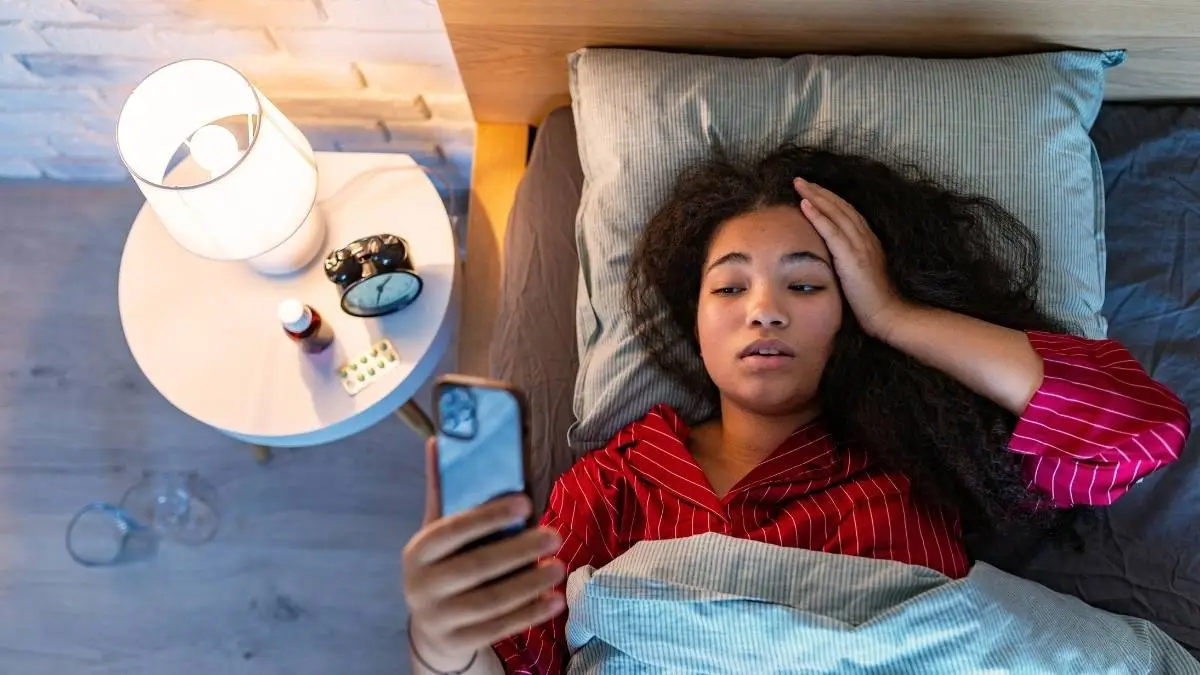
How to Get Better Sleep Without the High Price Tag
The fancy hotels and high prices of sleep tourism are for a select few, but the basic ideas of how to get good rest are for everyone.
The most important thing a $1,700-a-night trip gives you is not the tech, but the permission to unplug and make rest a priority without feeling guilty. In a culture that celebrates being busy, the high price makes it feel okay to take sleep seriously. You can give yourself that same permission at home.
Experts say you can make big improvements by focusing on your environment and your habits.
Design Your Room for Sleep:
Make your bedroom a “sleep haven” by controlling light, sound, and temperature. You can get blackout curtains, set your thermostat to a cool 65-68 degrees Fahrenheit, and use a white noise machine or earplugs.
It’s also important to remove all electronics from the bedroom to get rid of blue light and the urge to scroll at night.
Create a Wind-Down Habit:
Getting ready for sleep is a process. Make a consistent, screen-free routine for 30-60 minutes before bed.
This could include not having caffeine in the afternoon, avoiding alcohol before bed, and doing relaxing things like reading a book, stretching, meditating, or taking a warm bath.
Change Your Mindset:
The most important lesson might be to stop worrying about getting “perfect” sleep. As people on these trips have found, you can’t force yourself to sleep.
The goal is “good enough” sleep, not perfect sleep. Learn to listen to your body instead of the numbers on a sleep tracker, which are often not accurate.

